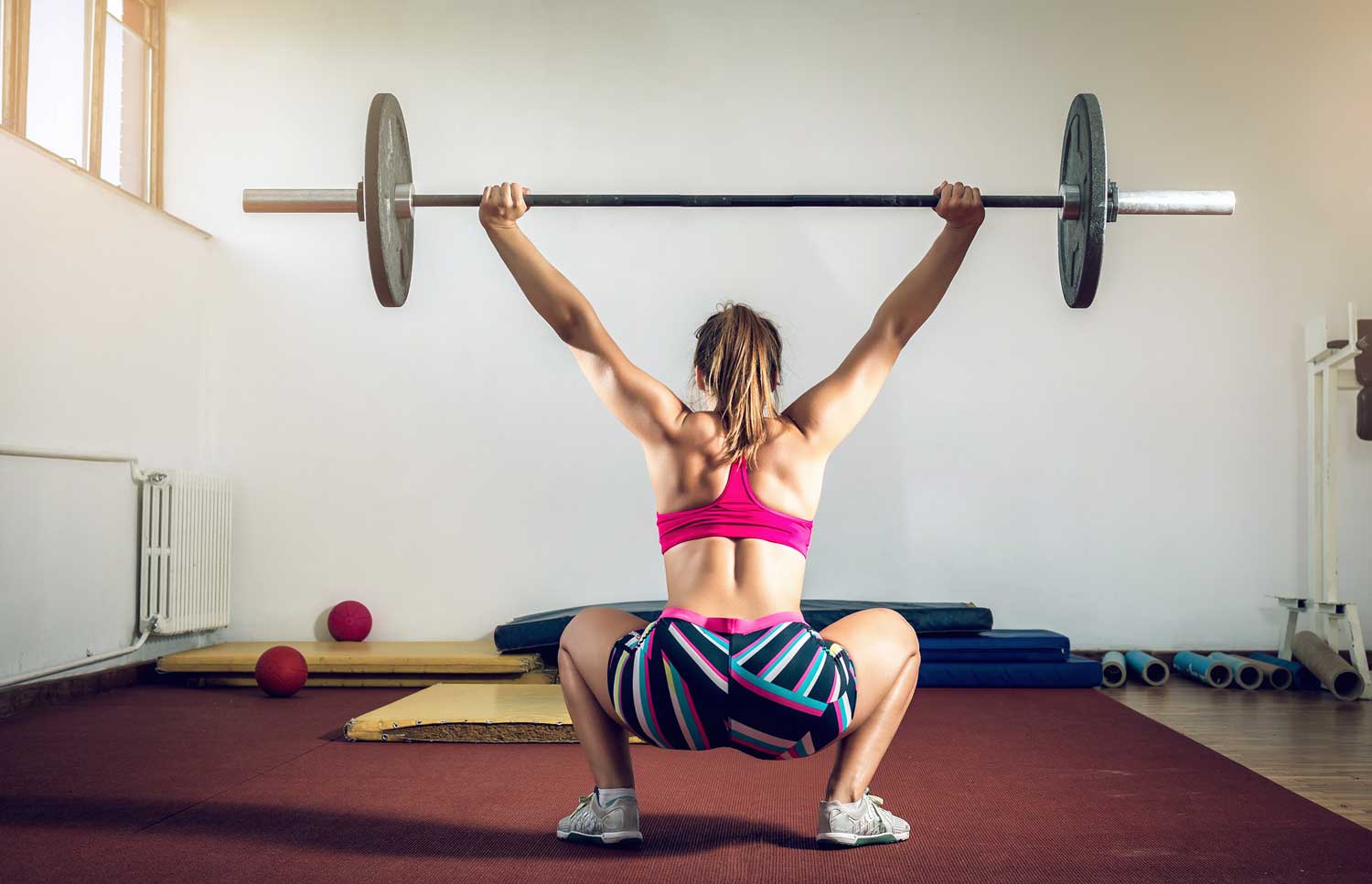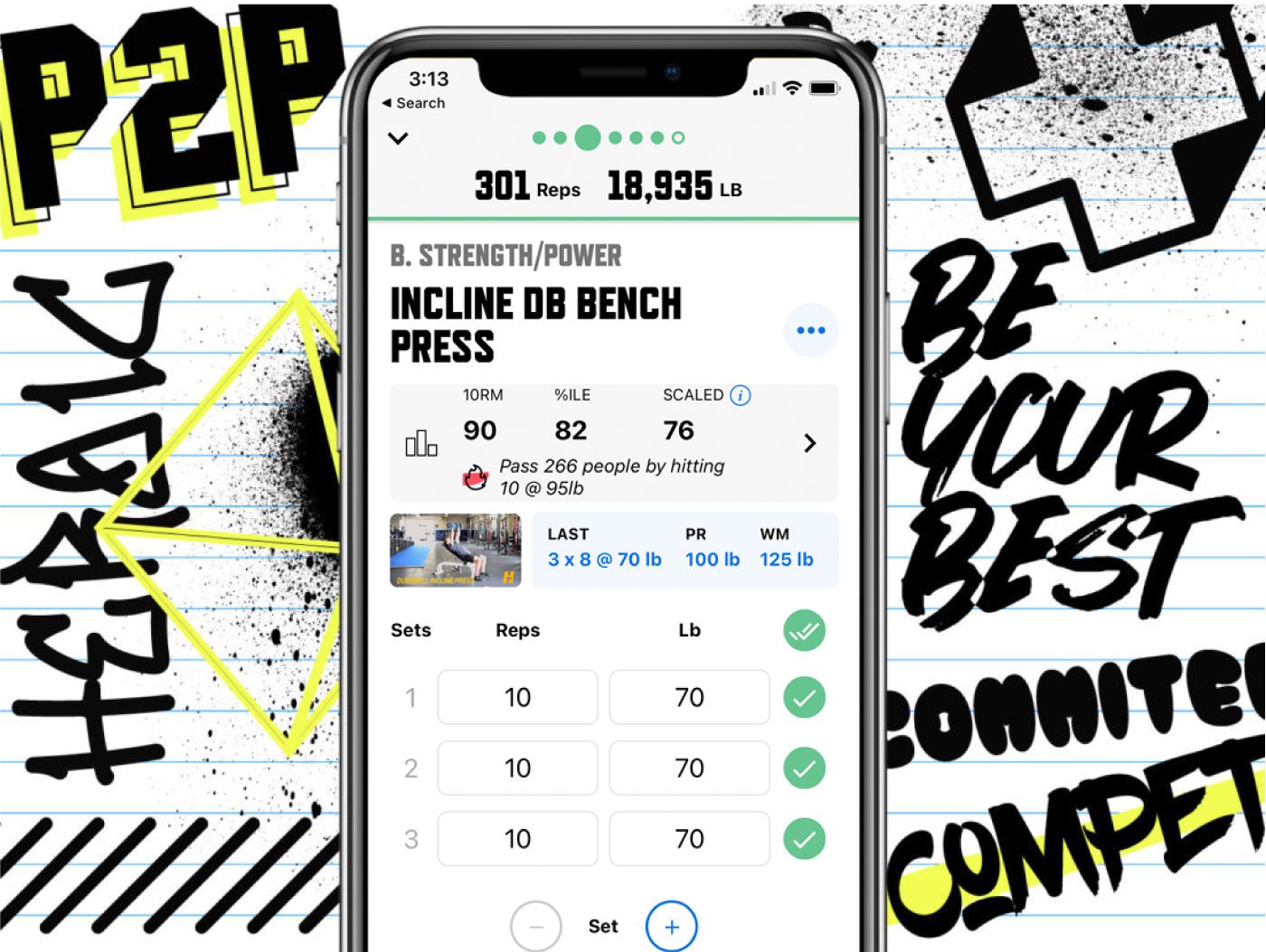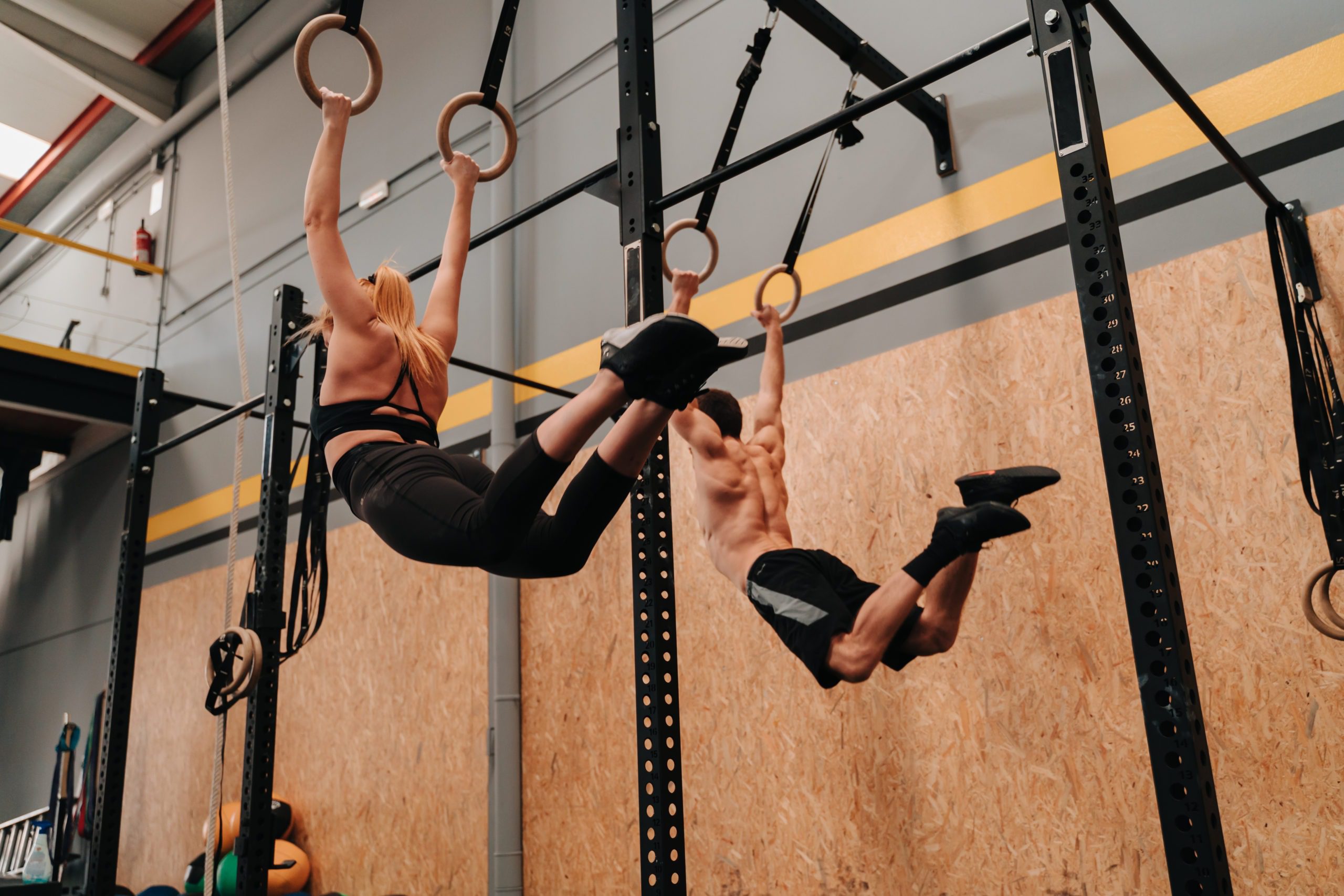Overhead Squat Points of Performance, Benefits & Challenges


Why is the overhead squat so hard?
Ask any coach worth their salt what the most challenging weight-bearing movement is for mobility and they’ll probably say overhead squats. If you want to get specific, a double kettlebell overhead squat or a close-grip overhead squat. Even practiced weightlifters struggle with those.
But if you want to be a well-rounded athlete who can really move, or someone who’s super capable at CrossFit, you need a solid overhead squat. It’s the bottom receiving position for the snatch and it challenges the stability and mobility for every major joint in your body.
Functional movements like jerks, snatches, squats, overhead carries, even reaching up into your closet to pull down a heavy box from the top shelf—all of these require a similar combination of skills that the overhead squat has covered. You need to be able to stabilize your core under load, control a weight overhead, and have some mastery over your own balance, mobility, and mechanical strength.
For most people, squatting while reaching up is just not a common everyday position, so it takes time and practice to get there.
Let’s talk about the overhead squat in detail and touch on some issues athletes struggle with when tackling the lift.
The overhead squat
Points of Performance
Unrack the barbell as you would for a regular back squat with the bar behind your neck, but fix your hands in a snatch-grip width. Press or jerk the bar into an overhead position by bending your knees and using your leg drive to push the weight into lockout with your arms straight above you. Stabilize the weight overhead and keep your elbows locked throughout the lift.
Find your feet in a squat width and initiate the squat by sitting your hips back. Keep your pelvis neutral (try not to arch your low back) and ribs pulled down while lowering into a full-depth squat with control. Once at the bottom, squeeze your glutes and return to a standing position with your arms still overhead.
Coach’s tip: Don’t let your shoulders bunch up to your ears. Keep your shoulder blades active and your midline tight.


DOWNLOAD
trainheroic’s
free APP
Common issues with the overhead squat & how to fix them
Issue: Chest falling forward
Work on: Ankle mobility
You start out in the right position with torso vertical and arms straight overhead, but as you squat, your chest drops forward so your armpits face the floor and everything falls apart from there. You probably lose the weight forward or at the very least, your overhead squat looks janky.
The goal is to keep the bar path in line with your shoulders and midfoot, elbows locked, and armpits facing out. Restrictions in the ankle joint can cause an athlete to lean forward just to get into squat depth and keep the weight overhead at the same time.
Try rolling out your calves and ankles or taking a lacrosse ball to your feet. Use Voodoo floss bands to compress the tissues and get them mobile or try banded distractions for your ankles.
Issue: Soft elbows or super-wide grip
Work on: Shoulder mobility
If the only way you can handle an overhead squat is to bend your elbows or take your grip excessively wide, you’ll need to hit those shoulders and the supporting musculature. Mobility restrictions in the shoulders and t-spine are super common, especially when you sit in a rounded position for much of the day. Getting some freedom in your tight upper body tissues will allow you to find the proper range of motion for an overhead squat.
Use a foam roller or lacrosse ball to work on your tight t-spine area (just above your bra strap), including your lats and traps. Be sure to try some weighted overhead stretches while lying over a kettlebell like Chad Vaughn does here:
Issue: Arching your back (anterior pelvic tilt)
Work on: Core & glute strength
While it may not seem like a major problem at first, dumping into your lumbar spine and letting your back arch when you squat can lead to big bad back problems. A wonky spine spells certain death for your overhead squats and the rest of your lifts.
Check out this video by Aaron Horschig at Squat University for tips on how to stretch your shortened hip flexors and strengthen your glutes.
The Marketplace: Shop Expert Programming from Real Coaches
Sometimes all you need to reach your destination on your fitness journey is an expert guide. We’ve got you covered.
The TrainHeroic marketplace is the only place to purchase programming from the World’s best coaches, delivered through the immersive training experience of the TrainHeroic app.
Browse from thousands of programs for any goal and every type of athlete.
Or, join a monthly programming membership to connect with a real coach and community of athletes training just like you. Try any programming subscription free for 7 days.

Issue: Wobbling or unstable bottom position
Work on: Balance & control
Supporting a weight overhead dramatically changes your center of gravity. In order to move anywhere with that weight, you need coordination and stability from your fingers down to your feet. Maintaining your body in a deep squat while holding a barbell overhead in a stable plane means finding the new balance between your body and the load. This kind of thing comes with time and practice.
Try getting really good at the Turkish Get-up to help build that stabilizing strength in the bottom of your overhead squat.
Bonus: Annihilate your core!!!
Core stability is a key aspect of overhead squats and pretty much every other essential athletic movement. It’s easy to default to the same core movements over and over again in your accessory work, but there’s only so many ways you can do a situp. Plus, you could be missing out on hitting your core from other angles or priming it for compound movements.
Try using single-arm carries and a variety of unilateral work to put more demand on your core stabilizers (and probably get a six-pack out of it).

Lily frei
Lily is TrainHeroic’s Marketing Content Creator and a CF-L1 with an English background. She was a successful freelance marketer for the functional fitness industry until being scooped up by TrainHeroic. An uncommon combo of bookish, artsy word-nerd and lifelong athlete, Lily is passionately devoted to weightlifting, CrossFit, yoga, dance, and aerial acrobatics. Find her showcasing her artist-athlete hobbies on IG @lilylectric.

Join the community
Sign up for the latest training news and updates from TrainHeroic

About TrainHeroic
Support
Made with love, sweat, protein isolate and hard work in Denver, CO
© 2021 TrainHeroic, Inc. All rights reserved.


